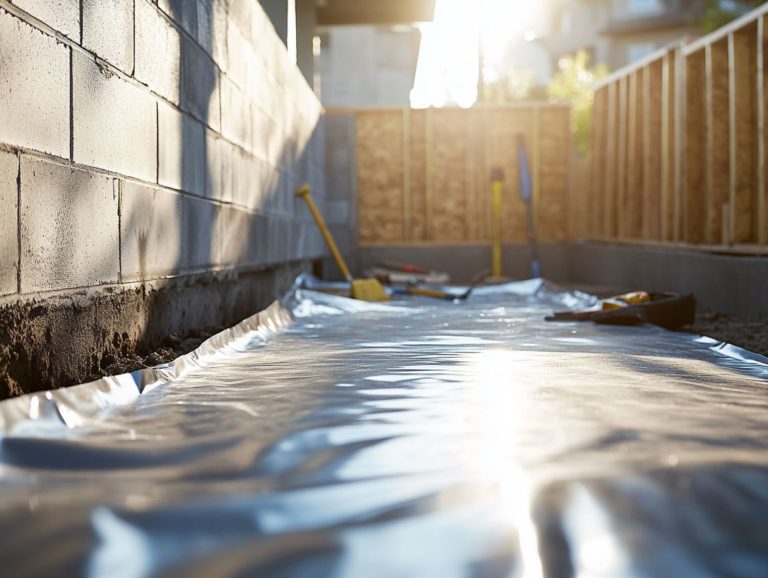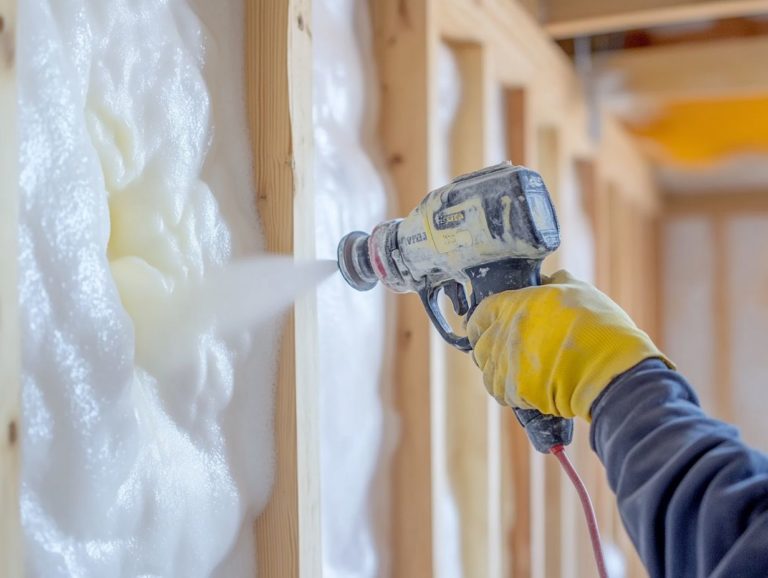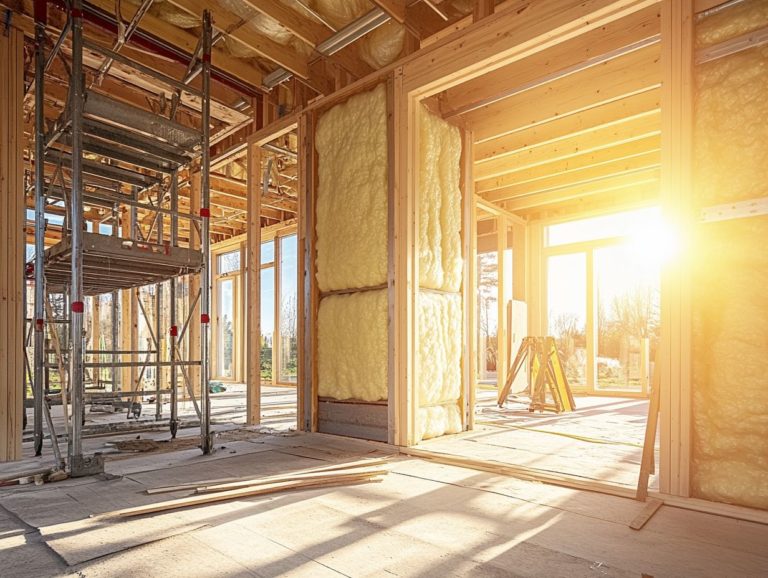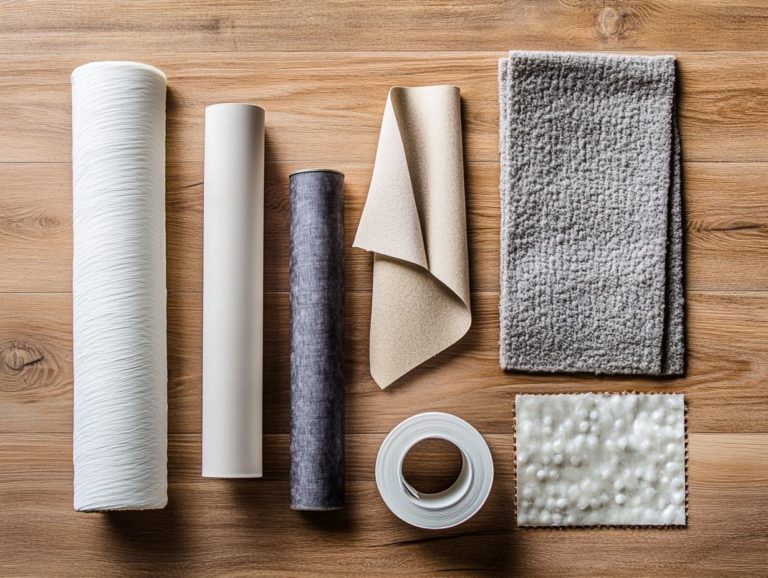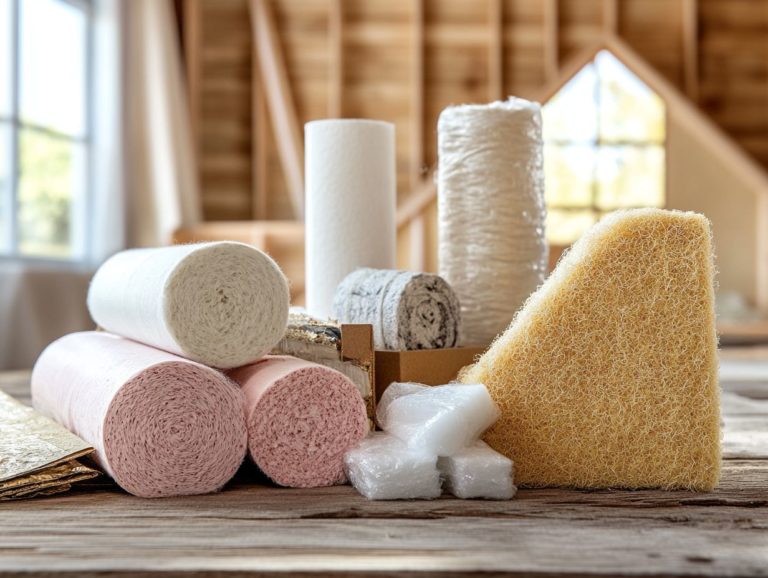5 Insulation Hacks for DIY Enthusiasts
Are you aiming to elevate your home s energy efficiency without straining your budget? Act now and start your journey to a more efficient home!
Whether you re a seasoned DIY enthusiast or embarking on your first project, this guide is filled with innovative insulation hacks that can transform your living space.
By harnessing recycled materials and sealing air leaks, you can implement practical tips that enhance comfort and lead to significant energy savings.
You will discover the benefits of DIY insulation, explore different materials you might consider, and learn about common pitfalls to avoid.
Get ready to insulate smarter and maximize your home s potential!
Contents
- Key Takeaways:
- 1. Use Recycled Materials for Insulation
- 2. Seal Any Air Leaks
- 3. Install Insulation in Unconventional Spaces
- 4. Utilize Thermal Curtains
- 5. Consider Insulated Paint
- What Are the Benefits of DIY Insulation?
- Frequently Asked Questions
- 1. What are the top five insulation hacks for DIY enthusiasts?
- 2. How can I effectively use weatherstripping tape for insulation?
- 3. Can reflective foil insulation help with insulation?
- 4. What are the benefits of using spray foam insulation?
- 5. How do I properly seal gaps and cracks with caulk?
- 6. Why is adding insulation to my attic important?
Key Takeaways:
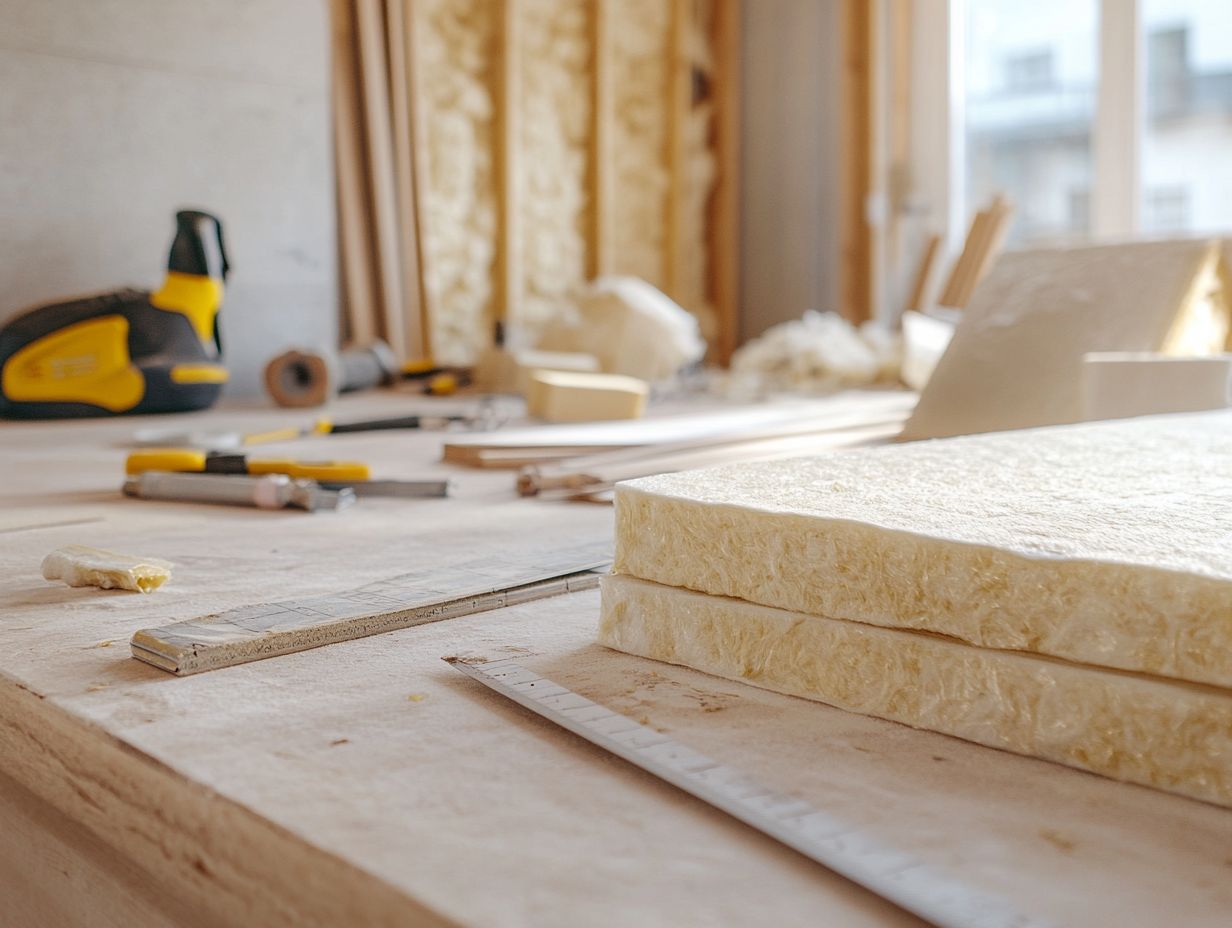
- Use recycled materials, such as newspapers or denim, for a cost-effective and eco-friendly insulation solution.
- Seal any air leaks with caulk or weatherstripping to prevent heat loss and save on energy costs.
- Don’t limit yourself to traditional insulation spaces consider using insulation in unconventional areas like crawl spaces or attics.
1. Use Recycled Materials for Insulation
Using recycled materials for insulation boosts your home’s energy efficiency and helps the environment, making it a smart choice for anyone living in San Francisco and beyond.
By choosing materials like fiberglass, cellulose, or spray foam derived from recycled products, you can significantly reduce your environmental footprint while tackling issues such as black mold and improving overall home comfort.
Cellulose, crafted from recycled paper products, is known for its remarkable moisture resistance, essential in damp climates where mold can thrive.
Fiberglass insulation, made from recycled glass, delivers outstanding thermal performance, keeping your home warm in winter and refreshingly cool in summer. Cutting down energy consumption also means lower utility bills who doesn t want that?
Spray foam, a type of insulation material that expands to fill gaps and incorporates reclaimed plastics, creates an air-tight seal that eliminates drafts, ensuring a cozy indoor atmosphere while boosting your home’s energy efficiency.
2. Seal Any Air Leaks
Sealing air leaks is vital for ensuring your home remains energy-efficient, effectively preventing drafts that can drive up heating costs and compromise your comfort.
By implementing effective sealing techniques like caulk, weatherproofing strips, and draft stoppers, you can greatly enhance your indoor climate control.
Caulking around windows and doors seals those pesky gaps that let cold or hot air sneak in, while weatherproofing strips add an extra layer of insulation in areas that need it most.
Draft stoppers can be effortlessly placed at the base of doors, further thwarting unwanted airflow.
These methods help save energy and keep your home at a comfortable temperature. This is especially beneficial in regions with unpredictable weather, such as San Francisco, where coastal winds can shift dramatically.
3. Install Insulation in Unconventional Spaces
Installing insulation in unconventional areas like crawl spaces and attics can significantly boost your home’s thermal efficiency, leading to a more comfortable living environment and cutting down on energy consumption.
There are many other spaces where insulation can be pivotal for energy savings:
- For example, when you insulate behind walls using spray foam, you create an effective thermal barrier by sealing gaps and minimizing air leaks.
- Ceilings are another prime opportunity; installing radiant barrier insulation helps reflect heat during those sweltering months.
- Don t overlook radiator reflectors, either they effectively direct heat back into the room rather than letting it escape through walls.
By considering these additional areas, you can dramatically enhance your home’s overall energy efficiency, ensuring a more consistent indoor temperature throughout the year.
4. Utilize Thermal Curtains
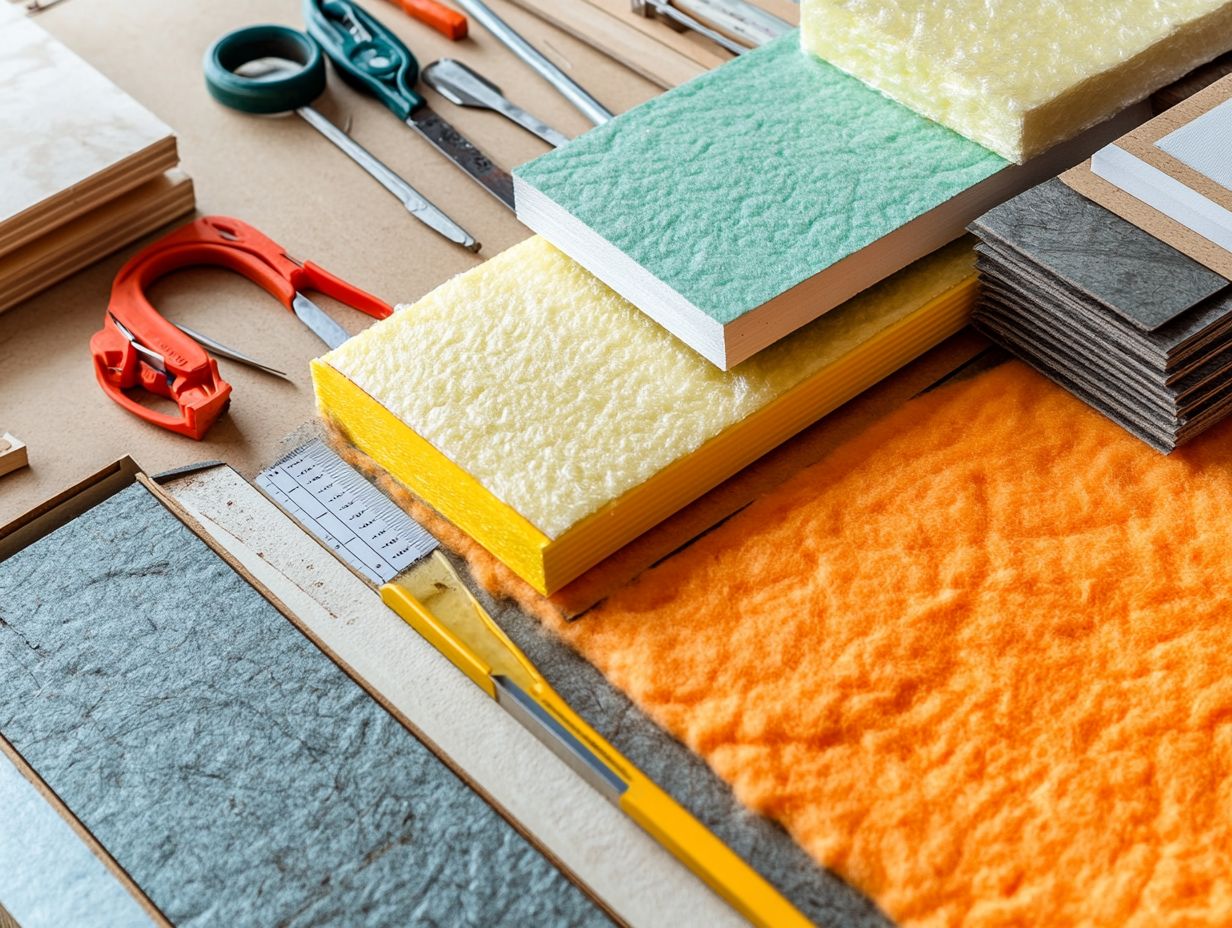
Utilizing thermal curtains is a smart move for your home. They greatly reduce heating costs while creating a warm atmosphere.
These curtains block chilly drafts, trapping heat in the winter. They also come in stylish options that complement any decor.
Compared to blinds or standard curtains, thermal curtains excel at keeping indoor temperatures stable. Many homeowners find that they save money on utility bills with this investment.
5. Consider Insulated Paint
Insulated paint can be a game-changer for your home insulation strategy. It s a cost-effective solution for those on a budget.
This innovative coating has special micro-particles that form a thermal barrier, significantly reducing heat transfer through your walls and ceilings.
Unlike traditional insulation methods that can be difficult to install, insulated paint applies easily. This makes it attractive for anyone wanting to upgrade their home without much hassle.
Its effectiveness shows in both homes and businesses. It helps maintain stable indoor temperatures year-round.
You can expect noticeable savings on your utility bills, contributing to a sustainable living environment.
What Are the Benefits of DIY Insulation?
The benefits of DIY insulation go beyond energy efficiency. They include significant cost savings and enhanced comfort in your home.
By taking on insulation projects, you can lower your energy bills. A well-insulated home maintains its temperature, meaning less spending on heating and cooling.
This hands-on approach fills you with pride and allows you to customize your projects to your needs. Imagine a family that insulated their attic and reduced their annual energy expenses by 30%!
By diving into DIY insulation, you avoid common pitfalls like over- or under-insulating. This results in a more comfortable living environment.
What Are the Different Types of Insulation Materials?
You ll find various insulation materials, like fiberglass, cellulose, and spray foam, each with distinct benefits tailored to your home s needs and budget.
Fiberglass is fire-resistant and affordable, making it a popular choice for attics and walls.
Cellulose is made from recycled paper and excels at minimizing air leaks, enhancing energy efficiency and keeping your indoor climate comfortable.
On the other hand, spray foam creates an airtight seal, expanding to fill gaps. It s perfect for awkward spaces or hard-to-reach areas.
However, each option has potential drawbacks. Fiberglass struggles in damp conditions, cellulose can settle over time, and spray foam is often pricier.
The right insulation choice for you strikes a balance between these characteristics and your specific home requirements.
What Tools and Materials Do You Need for DIY Insulation?
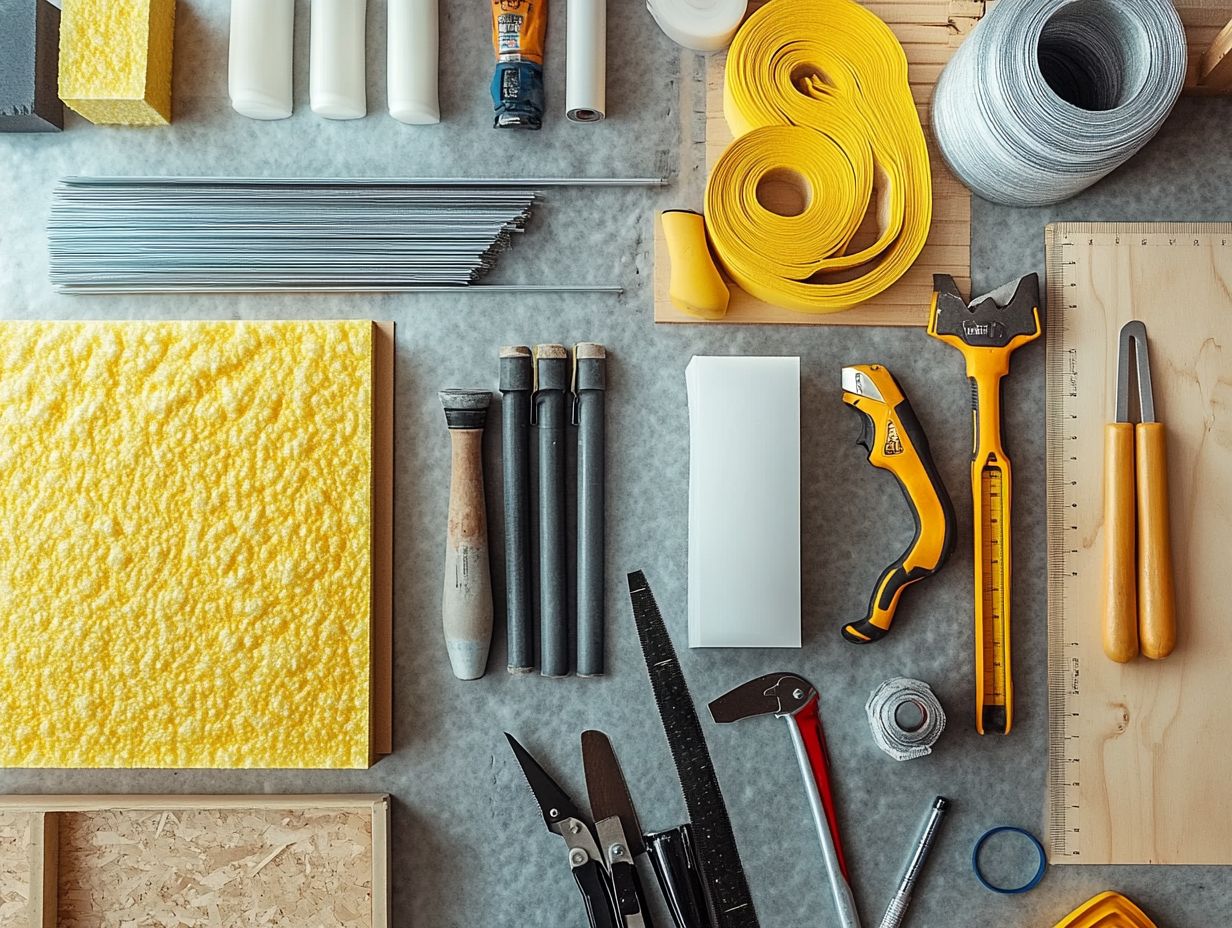
To embark on a successful DIY insulation project, you need the right tools and materials. Protective gear is essential to ensure your safety during installation.
Equipping yourself with essential tools is key to identifying problem areas that require attention. A heat detection tool, for example, is invaluable for spotting heat loss and hidden gaps that might otherwise go unnoticed.
Insulation kits offer a comprehensive solution, providing all the specific materials you need to achieve optimal results. Don t underestimate the importance of protective gear, such as gloves and masks, to shield yourself from irritating dust and potential allergens.
When combined, these tools and materials create a solid foundation for your insulation project. This enhances energy efficiency and comfort in your home.
What Are Some Common Mistakes to Avoid When Insulating?
Many homeowners fall into common insulation traps that can seriously hinder energy efficiency. These mistakes can even lead to unwanted issues like black mold, particularly during DIY insulation projects.
This is especially true when you overlook key elements like proper sealing around edges. Ensuring adequate ventilation is also crucial; ignoring these steps can create pockets where moisture lingers, setting the stage for mold to thrive.
To sidestep these pitfalls, thoroughly assess the areas needing insulation. Choose the right materials to seal gaps and regularly inspect your ventilation systems to maintain air quality and regulate temperature.
By paying attention to these factors, you can greatly enhance the effectiveness of your insulation efforts.
How Can Proper Insulation Save on Energy Costs?
Want to save big on energy bills? Proper insulation is your ticket! It enhances energy efficiency and reduces heating expenses, ultimately leading to lower energy bills.
When insulation effectively traps heat during colder months and keeps it out during summer, it creates a more comfortable living environment. This thermal barrier minimizes fluctuations in indoor temperatures.
Your heating systems whether they re furnaces or heat pumps won t have to work as hard to maintain a steady climate. Homes insulated to the standards recommended by energy experts can save an average of 15% on energy costs each year.
In fact, case studies reveal that retrofitting an older home with proper insulation can significantly cut energy consumption. This showcases the tangible benefits of investing in this essential upgrade.
Don t wait start your insulation project today and feel the difference!
What Are Some Other Eco-Friendly Insulation Options?
Exploring eco-friendly insulation options benefits the environment and enhances energy efficiency in your home. This aligns perfectly with the principles of sustainability.
By integrating materials like recycled content insulation, you can significantly reduce waste while enjoying improved thermal performance. Think about plant-based materials such as hemp and cellulose; they offer natural biodegradability and excellent insulating properties.
Embracing sustainable practices like utilizing local resources and minimizing production processes further amplifies your positive impact on carbon footprints. These eco-friendly choices enhance your home s comfort and encourage a collective movement toward greener living.
They foster a more sustainable future for generations to come.
Frequently Asked Questions
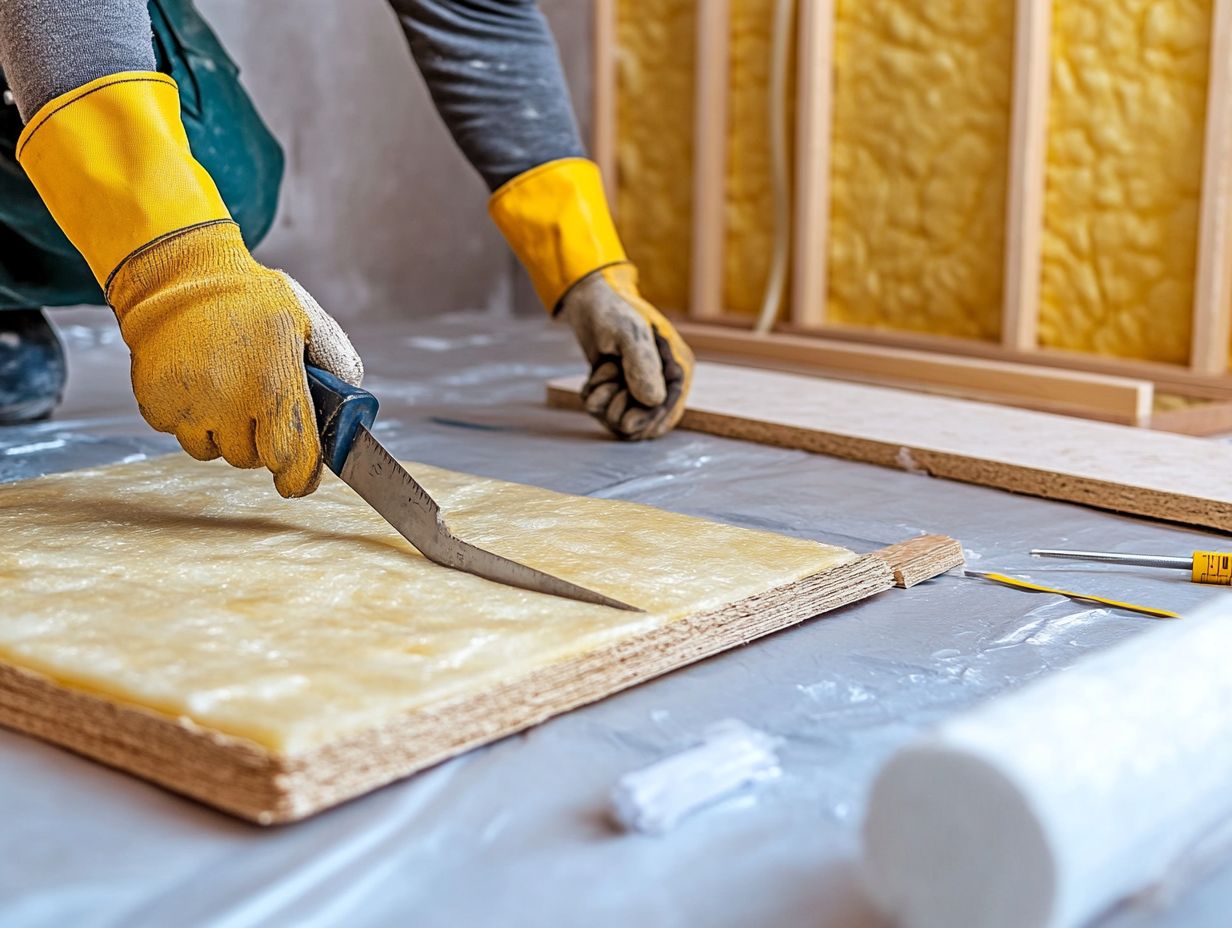
1. What are the top five insulation hacks for DIY enthusiasts?
Here are the top five insulation hacks you should try:
- Using weatherstripping tape
- Adding reflective foil insulation
- Using spray foam insulation
- Sealing gaps and cracks with caulk
- Adding insulation to your attic
2. How can I effectively use weatherstripping tape for insulation?
Weatherstripping tape is a simple and affordable way to prevent drafts from doors and windows. Measure the length you need, cut the tape, and stick it along the edges to create a tight seal.
3. Can reflective foil insulation help with insulation?
Yes, reflective foil insulation is effective. It reflects heat away in summer and keeps warmth inside during winter.
You can use it in attics, crawl spaces, or behind walls for extra insulation.
4. What are the benefits of using spray foam insulation?
Spray foam insulation is favored by DIY enthusiasts. It easily fills gaps and cracks, creating a strong seal, but there are also important factors to consider. For instance, check out 5 things to consider when insulating to ensure the best results.
It has a high R-value, which means it provides great insulation, and it also resists mold and pests.
5. How do I properly seal gaps and cracks with caulk?
Start by cleaning the area with a damp cloth to remove dust. Then apply caulk into the gap or crack, filling it completely.
Use a smoothing tool or your finger to create a polished finish.
6. Why is adding insulation to my attic important?
Insulating your attic is crucial for lowering energy bills. It stops heat from escaping, keeping your home cozy.
This also helps regulate the overall temperature in your home, enhancing comfort.

